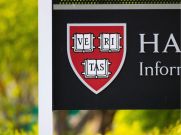This article originally appeared on Minding the Campus on December 14, 2014.
Many colleges and universities have adopted data-mining to improve student retention and to channel students to courses and programs that the institutions judge most appropriate. The future of higher education is here and it is, in spirit, benignly totalitarian. Goldie Blumenstyk, writing about it in the New York Times, (“Blowing Off Class? We Know”) emphasizes the benign part. Colleges, in her view, have found a tool that can “cut the cost of higher education for students and their families, as well as for taxpayers.” And data-mining, she says, is “showing many of the most tangible results” among the innovations aimed at solving “the higher education crisis on America.”
The totalitarian side of “big data” is, in Blumenstyk’s phrasing, a rhetorical question, “Big Brother-esque?” and a passing shadow, as it “might also be tinged with a little paternalism.”
Forget “-esque” and “tinged.” Big Brother would have bowed his head in admiration at apps that track every student’s ID card swipes and alert campus authorities when a student deviates from pattern. At Ball State that apparently includes triggering a specialist to check up when a student fails to swipe in at a campus-sponsored party on Saturday night. Partying, after all, is part of what we expect students to do in college and a break in pattern may indicate a problem.
The “paternalism” extends to alerting professors to students who cram rather than pace their learning, and students who pursue majors which the college judges too hard for them based on their grades. In matters like these, colleges are using new technology for an old purpose. In principle, students have always benefited from the counsel of faculty advisors or the friendly oversight of staff in offices of “academic advising.” Those older forms of intervention, however, were generally lax. Students could easily enough wander from their “program maps,” get in over their heads, or make the sorts of decisions that would result in college taking five or six years instead of four.
If the goal is efficiency and efficiency means the greatest number of students graduating on time, Big Data does indeed look like a good answer. This is especially true for students “at risk” and the colleges that serve them. The at-risk students, as Blumenstyk reminds us, are generally low-income and have slim margins for making mistakes that might lead, for example to having to switch majors.
Undermining Autonomy
Granting all this, the adoption of close electronic monitoring of students by their colleges is more than a little creepy. It also undermines one of the essential purposes of higher education, which is to foster personal autonomy. We want college students to grow in intellectual and moral responsibility. That means allowing them to make informed decisions that have actual consequences. That can be messy. Students often make poor academic decisions, especially as freshmen. Many are overconfident in their preparation and plunge into STEM fields only to retreat a semester or two later into a softer major. Others, released from parental supervision, allow their social lives to take precedence over their studies.
Such mistakes typically bring harsher consequences to low-income students. Elizabeth Armstrong and Laura Hamilton’s book Paying for the Party: How College Maintain Inequality (2013) drove home this point. But does the need to protect low-income students from their own folly really provide sufficient warrant for re-architecting higher education to make it “mistake-proof”?
The danger is that by monitoring and, inevitably, controlling students’ decisions every step of the way, we end up with educational taxidermy. The stuffed bird or antelope might look like the living thing and be posed in a naturalistic setting, but there will be no life in it. The low-income student who is steered to a safe major in psychology or Chicano Studies, instead of, say, mechanical engineering, may have better odds of finishing his degree in four years, but he has much worse odds of discovering a deep talent and pushing himself to his highest level of achievement. His odds of getting a good job after graduation are also reduced.
Data-mining helps college administrators play the averages. It can pretty well help colleges spot patterns in class attendance, diligence on reading assignments, minutes spent in the library, hours online, and time in the campus fitness center. Blumenstyk gives us examples of such systems at Arizona State, which manages 82,000 students this way, and Georgia State that has a database of 2.5 million grades to crunch. Both institutions see themselves as only beginning to draw on the full power of the new analytic systems that can integrate data from numerous sources.
The Likely Outcome
The results are, in every sense, predictable. Higher education will get better at mass production. But colleges and universities will get worse at the one most important thing—education. Education requires cultivating in students the quality of good judgment. It’s a complicated undertaking but, a few thousand years after Socrates schooled us, we have some well-tested ideas about it. Education happens when we present students with good instruction and let them rise to its demands—or fail in the effort. Smoothing away all the apparent obstacles really just creates the new obstacle of dependency.
The promises of data-mining in higher education are that we will end up with more students achieving degrees at lower cost, and the gains will contribute to “social justice” by helping more low-income students. Those promises are likely irresistible to college administrators. But the soft totalitarianism that will be required to achieve these gains is too high a price. It will give us generations of college graduates accustomed to being told what to do and when to it. It will further dampen imagination, initiative, exploration, and daring in an environment that is already far too buffered from real world consequences. Data-mining in higher education advances social control at the expense of free inquiry. At the bottom of those mines lies a rich deposit of fool’s gold.













